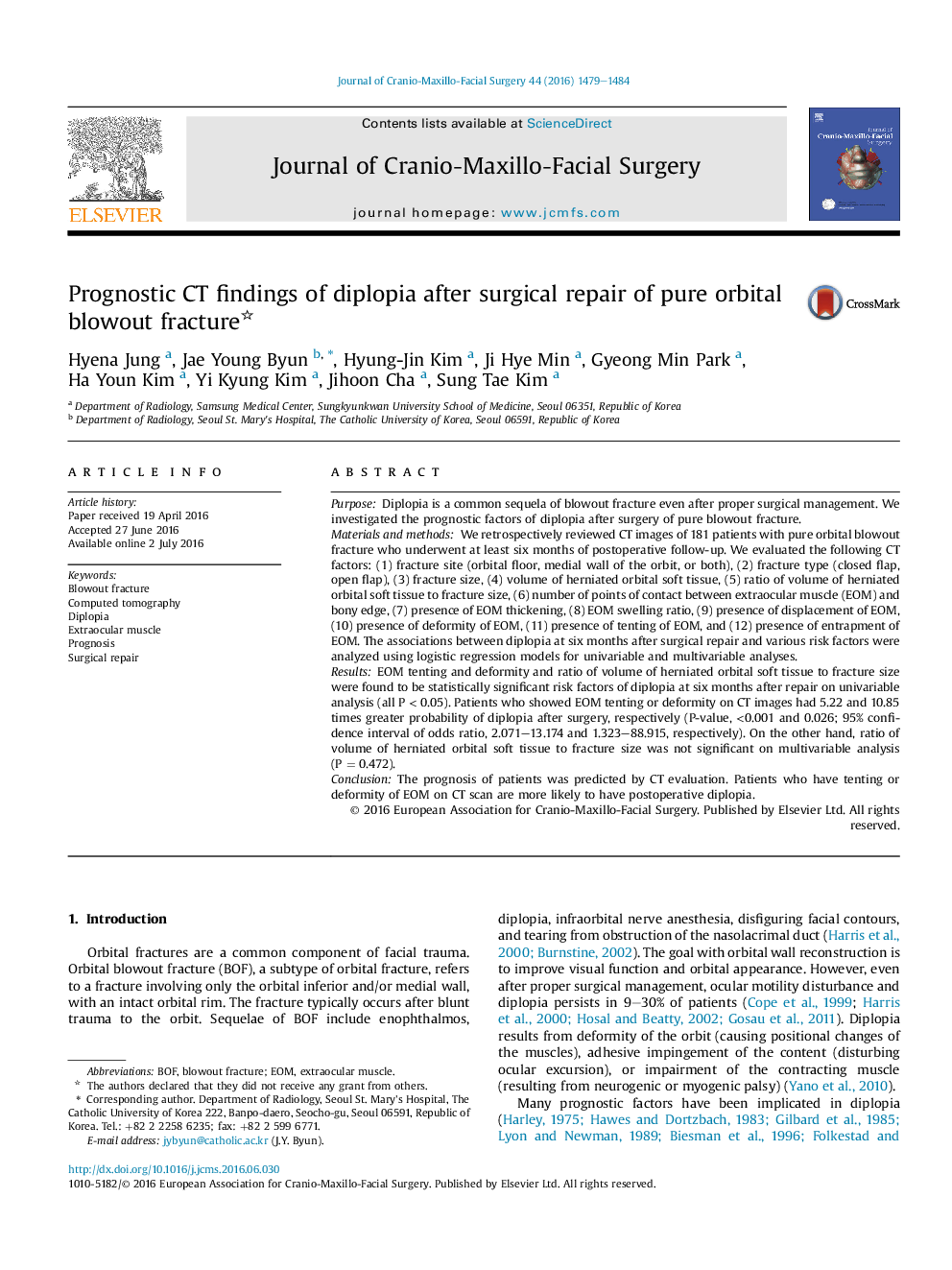| کد مقاله | کد نشریه | سال انتشار | مقاله انگلیسی | نسخه تمام متن |
|---|---|---|---|---|
| 3142023 | 1406811 | 2016 | 6 صفحه PDF | دانلود رایگان |

PurposeDiplopia is a common sequela of blowout fracture even after proper surgical management. We investigated the prognostic factors of diplopia after surgery of pure blowout fracture.Materials and methodsWe retrospectively reviewed CT images of 181 patients with pure orbital blowout fracture who underwent at least six months of postoperative follow-up. We evaluated the following CT factors: (1) fracture site (orbital floor, medial wall of the orbit, or both), (2) fracture type (closed flap, open flap), (3) fracture size, (4) volume of herniated orbital soft tissue, (5) ratio of volume of herniated orbital soft tissue to fracture size, (6) number of points of contact between extraocular muscle (EOM) and bony edge, (7) presence of EOM thickening, (8) EOM swelling ratio, (9) presence of displacement of EOM, (10) presence of deformity of EOM, (11) presence of tenting of EOM, and (12) presence of entrapment of EOM. The associations between diplopia at six months after surgical repair and various risk factors were analyzed using logistic regression models for univariable and multivariable analyses.ResultsEOM tenting and deformity and ratio of volume of herniated orbital soft tissue to fracture size were found to be statistically significant risk factors of diplopia at six months after repair on univariable analysis (all P < 0.05). Patients who showed EOM tenting or deformity on CT images had 5.22 and 10.85 times greater probability of diplopia after surgery, respectively (P-value, <0.001 and 0.026; 95% confidence interval of odds ratio, 2.071–13.174 and 1.323–88.915, respectively). On the other hand, ratio of volume of herniated orbital soft tissue to fracture size was not significant on multivariable analysis (P = 0.472).ConclusionThe prognosis of patients was predicted by CT evaluation. Patients who have tenting or deformity of EOM on CT scan are more likely to have postoperative diplopia.
Journal: Journal of Cranio-Maxillofacial Surgery - Volume 44, Issue 9, September 2016, Pages 1479–1484